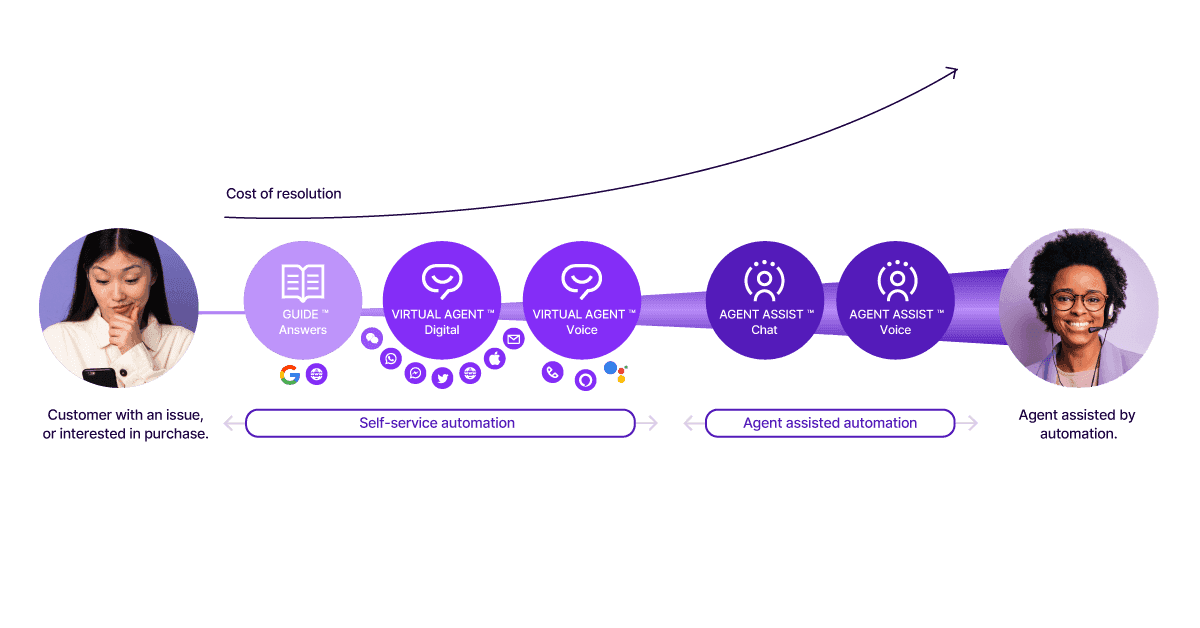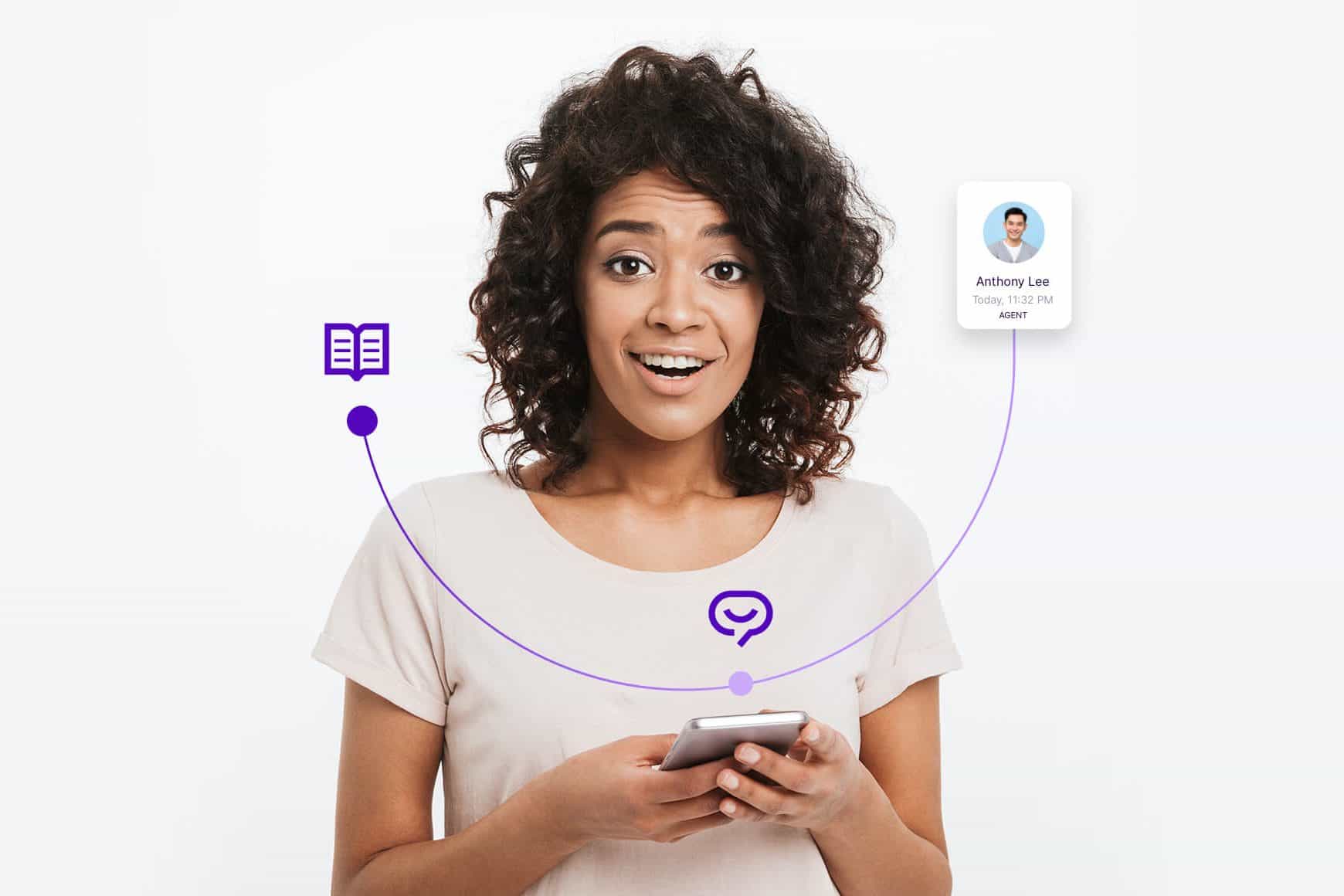CSP to DSP transformation: Creating the best Telco customer experience with contact center AI

By Julia Ochinero
0 min read

The role of self-service and contact center AI in Telco customer retention.
Communications service providers (CSPs) today face an ever-increasing, fast-evolving ecosystem of challengers, including other CSPs and web-scale service providers, such as Amazon, Apple, Facebook, and Google.
Meanwhile, messaging services including WhatsApp, Skype, and others have captured the consumer’s “love”—displacing the CSP. While CSPs built, maintained, and invested in new infrastructure including 5G, these new entrants are the ones monetizing it.
To compete, CSPs need to expand their service offerings as well as their business models, perhaps most importantly, their relationships with the consumer. To accomplish this, they need to transform from CSPs to digital service providers (DSPs).
This transformation from a CSP into a DSP requires that they deliver the end-to-end digital services that consumers demand and businesses expect. This digitization will provide them with the foundation and flexibility required to expand into new markets while better responding to customers’ needs.
Telco customer experience (CX) management plays a central role. The contact center, leveraging new automation and artificial intelligence (AI) capabilities, can be the engine for this transformation as the entire CX is redefined and digitized.
Talkdesk has a vision of reaching 70% digitization and 80% automation bolstered by its AI and automation products.
These products range from self-service tools, such as voice and digital virtual agents, to agent empowerment tools, including Agent Assist, Call Recording, and Quality Management. Customer insight tools include customer feedback management and Speech Analytics, which feature prominently in the Talkdesk suite of AI-powered products.
"Customers reward companies for resolution, not channel choice."
Gartner
Contact center AI and automation at a Telco.
First, let’s take a pause. Why are we even talking about this?
- Your business wants this—it’s cost-effective.
- Subscribers prefer it.
What? Don’t people want to speak with a live agent? Well, maybe my 82-year old mom still does. (and offline ask me her secret to getting to a live agent fast – she figured out her own workaround. She’s a senior citizen on prepaid—so we know she is expensive.)
But increasingly, consumers prefer the speed and resolution of self-service via automation. Especially Generation Z. My 15-year olds, who speak to “Siri” like she is a friend. This has only accelerated after all the remote engagement realized during the pandemic.
And don’t worry if you feel this automation is going to get in the way of “feelings of loyalty.” In a recent Gartner “Reprioritize Investments To Maximize Self-Service Containment” webinar, they said “Customers reward companies for resolution, not channel choice”—Gartner. Customer retention in the Telco industry can actually be achieved through self-service.
So, how might we put the capabilities mentioned above into action? Let’s first consider the role self-service and automation play in a Telco. What does it look like?
First of all, self-service needs to be a part of a wider set of functionality to facilitate a seamless subscriber journey from the self-service to the assisted channels.

First, Talkdesk has developed a comprehensive AI-powered automation suite that can support the end-to-end service experience with an easy, connected, and quick-to-deploy omnichannel setup.
Traditionally, a subscriber might start their journey with a Google search regarding a question on roaming plans, then land on an AI-powered knowledge base where they are presented with an FAQ on roaming charges.
Side note: Importantly, if you really want to work towards a higher level of automation, you need to start with effective customer service SEO to ensure your customer finds the channels that are self-service before they find your phone number. I challenge you now to search for your customer service and see which contact option is the highest, boldest, and most frequent mention. If it is your phone number, you’ve already pushed them directly into an assisted channel.
If the issue is more complex, then a subscriber can initiate a second step of the interaction with a conversational interface—digital or voice, whichever they prefer. Here the system can tap into a wide array of digital or voice channels, including proprietary ones.
At this point in the customer journey, if the need isn’t met or there is the urge to speak to a human agent, the subscriber has full control over when to transit to an assisted digital or voice channel. This is critical in customer retention in the Telco industry.
Meanwhile, the agent (in-the-loop) has a full augmented view of the complete journey to date and AI-powered insights supporting an effective resolution.
As you move through the journey, the cost of resolution increases exponentially as a user flows from self-service to assisted channels. The speed of resolution is ultimately the most important attribute in the customer experience which is why self-service is quickly becoming the preferred means of engagement for the subscriber.
Contact center AI is obviously a huge trend for Telcos. To be clear, it helps, but it doesn’t replace humans. You’ve probably experienced companies that rely solely on AI to do their job for them, thinking if their AI is amazing then there is no longer a need for human support.
As you consider AI in your end-to-end CX, ensure it is integrated thoughtfully with consideration to the uniqueness of your customer and their needs. While you want to efficiently manage the thousands of inquiries, each one needs to feel they are unique.
Looking to empower your subscribers? Check out this video for a little inspiration.









